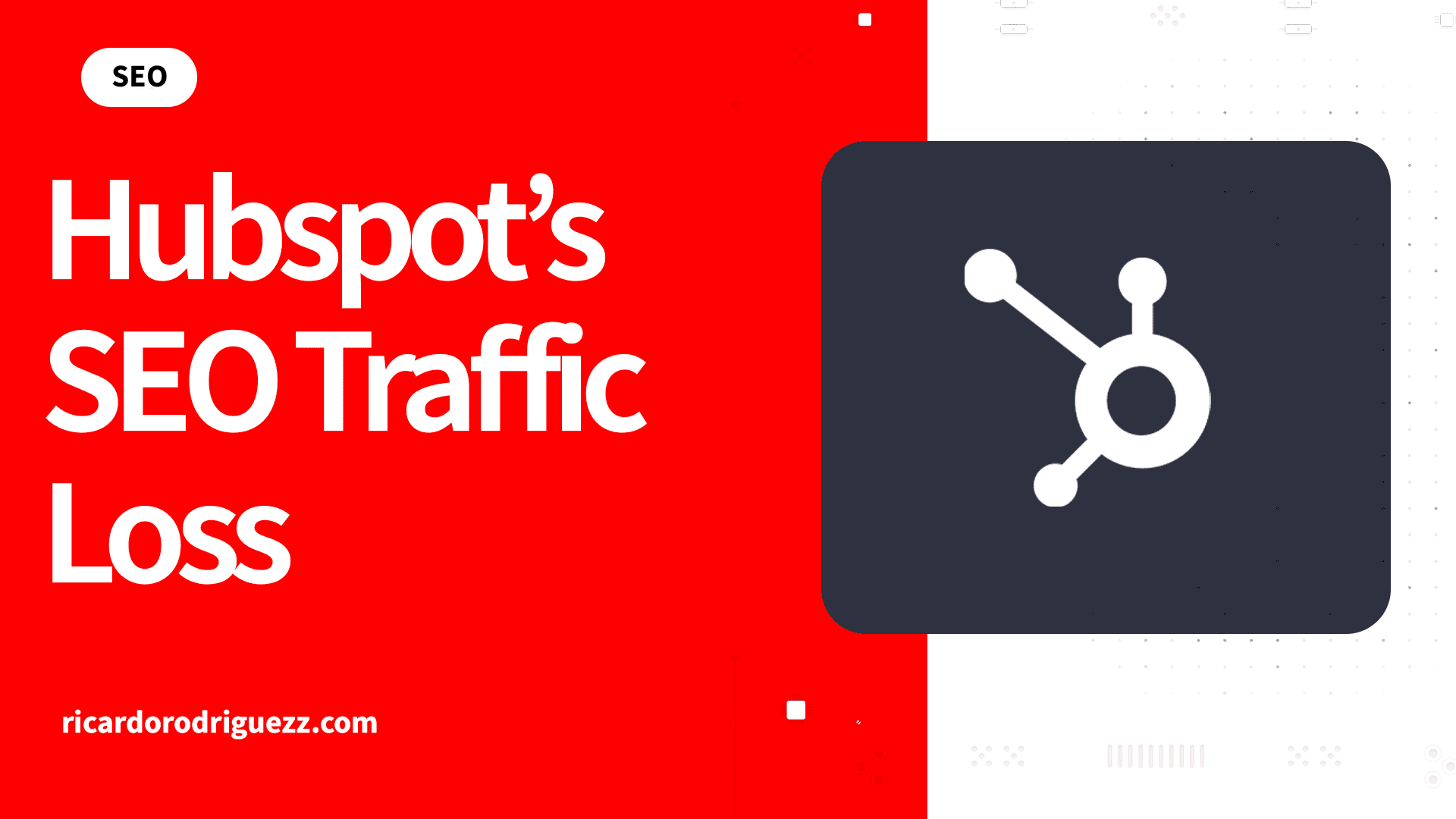HubSpot, a marketing and sales software company, has seen a massive drop in organic traffic – 80% of its organic traffic disappeared. This has been a hot topic in the SEO community and in this post we’ll go over the reasons why, the lessons learned and how HubSpot can recover and improve their SEO going forward.
The Traffic Drop: A Closer Look
HubSpot’s organic traffic went from 13.5 million in November to 8.6 million in December and then to 6.7 million in January. Here’s the graph to show the decline.

Why Did HubSpot Lose Traffic?
Several reasons contributed to HubSpot’s traffic loss. Let’s get into the details:
1. Lack of Topical Relevance
One of the main reasons for HubSpot’s traffic decline is lack of topical relevance in their content. HubSpot’s core product is a CRM (Customer Relationship Management) tool but many of their blog posts and pages didn’t align with this product or its related topics. For example, posts like “Famous Quotes” or “Best Cover Letter Examples” don’t provide value to users looking for CRM software or marketing tools. While these topics get some traffic, they don’t align with HubSpot’s topical authority which is key to SEO success.
2. Thin Content and Low Word Count
Another issue is the thin content on some of HubSpot’s pages. Many of their blog posts were low word count and lacked depth so they couldn’t rank for competitive keywords. For example, when comparing HubSpot’s content to a competitor like Salesforce, it’s clear that Salesforce’s content is more comprehensive and SEO optimized. Salesforce’s blog on “Small Business Ideas” has 16,000 words while HubSpot’s equivalent content has 5,500 words. This difference in content quality and depth likely contributed to Salesforce ranking higher for similar keywords.
3. Algorithm Updates and Reputation Abuse
Google’s algorithm updates, especially the reputation abuse update, also contributed to HubSpot’s traffic loss. This update targeted sites that were ranking content that didn’t align with their core business or expertise. HubSpot’s focus on ranking for high volume keywords rather than creating content that aligns with their CRM product likely triggered this penalty. Even big publishers like Forbes experienced traffic drops due to this update so Google is getting stricter on topical relevance and content quality.
4. Content Structure and Internal Linking
HubSpot’s content structure also contributed to the traffic decline. While they did break down their blogs into topics, their internal linking and overall structure didn’t guide users through the sales funnel. For example, Salesforce’s blog on “Small Business Ideas” has internal links to landing pages about CRM for small businesses which ties the content to their core product. HubSpot’s CTA for the same topic goes to a “Free Business Startup Kit” which doesn’t relate to their CRM product. This lack of alignment between content and product offerings weakened their topical authority and user engagement.
Lessons Learned: How HubSpot Can Recover
While HubSpot’s traffic loss is big, here’s what they can do to recover and improve their SEO:
1. Focus on Topical Relevance
HubSpot needs to create content that aligns with their core product—CRM software. Instead of targeting high volume keywords that don’t relate to their business, they should focus on topics like “What is a CRM?”, “CRM for Small Businesses” and “Mobile CRM Solutions”. By building topical authority around their product they can rank higher and get more relevant traffic.
2. Content Depth and Quality
HubSpot should create longer and more comprehensive content that provides value to users. For example instead of publishing thin content with low word count they should create in-depth guides, case studies and tutorials that covers all aspects of their product. This will not only rank higher but also increase user engagement and conversions.
3. Internal Linking and CTAs
HubSpot should also improve their internal linking structure and CTAs to guide users through the sales funnel. For example if they write a blog post about “Small Business Ideas” they should include internal links to landing pages about CRM for small businesses. This will help users understand how their product can solve their problems and increase conversion rates.
4. Competitive Analysis
Finally HubSpot should do a competitive analysis to see what’s working for their competitors. For example Salesforce’s content strategy is clearly working as they’re ranking for more keywords and covering more topics related to CRM. By analyzing their competitors’ strategy HubSpot can find gaps in their own content and make the necessary changes.
Conclusion: Topical Relevance in SEO
HubSpot’s traffic loss is a lesson to all marketers and SEOs. In today’s competitive landscape it’s not enough to just target high volume keywords or publish content to rank. Google’s algorithm is getting smarter and topical relevance is more important than ever. By creating high quality relevant content that aligns with your core product you can rank higher, get more organic traffic and ultimately drive more conversions.
So go ahead and do the same. Prioritize topical relevance, content depth and internal linking. Interested in working with a freelance SEO consultant to get an in-depth SEO strategy for your business? Feel free and contact me!







